Do you need help on how to train your dog to be off-leash? You’ve come to the right place. In this post, I’ll discuss everything you need to know about off-leash training, including how long a leash should be, when dogs are ready for off-leash training, tips, tricks, and what it means to have a dog that is “off-leash.”
Your Complete Guide to Off-Leash Training
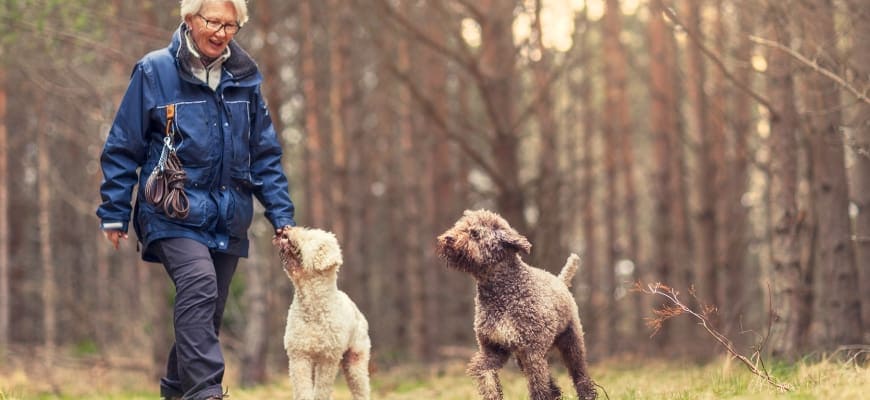
Off-leash training can be a great way to allow your dog more freedom and independence, but it’s not always the best option to get that off-leash or slip-leash experience. There are a few key things to keep in mind before embarking on off-leash training:
- Foremost, it’s important to remember that off-leash training is not always safe. There are many dangers that can occur, both for your dog and other people and animals. Things like running into traffic, getting lost, or encountering other dangerous animals can all pose a serious threat to both you and your pet.
- Second, off-leash training takes a lot of time and effort. It’s not something that can be mastered overnight. In fact, it can take weeks or even months of consistent training before your dog is ready to be let loose in an open area.
- Finally, it’s important to make sure that your dog is properly trained before taking him or her off-leash. This means teaching them basic obedience commands like sit, stay, come, and heel. If your dog isn’t yet reliably responding to these commands, it’s best to keep them on a leash until they are.
Overall, off-leash training can be a great way to allow your pup more freedom and independence. But it’s important to remember that there are risks involved and that proper training must be in place before taking the leap.
Off-Leash Training and How to Do It
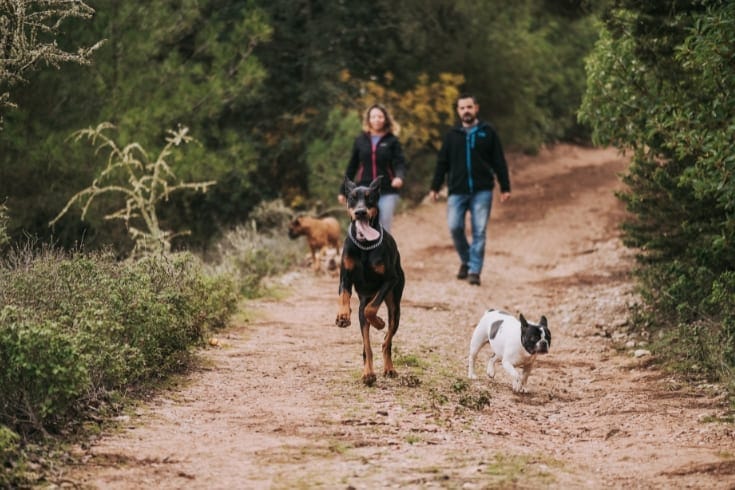
The process of off-leash training your dog will largely depend on their individual temperament and personality. Some dogs may take readily to being off-leash, while others may need more time and practice. Here are a few general tips to get you started:
- Start small: When first starting out with off-leash training, begin in a safe and controlled environment like a fenced-in yard or park. Once your dog is comfortable and reliable in this setting, you can gradually start working them in more open areas.
- Use a long leash: When teaching your dog to be off-leash, use a long leash (at least 10 feet long) so that you have more control over them if needed. This will also help prevent them from wandering too far away from you.
- Stay calm: It’s essential to remain calm during off-leash training sessions. If you get too excited or tense up, your dog will probably pick up on this and become anxious or stressed themselves. Instead, try to stay relaxed and positive so that your dog feels confident in their surroundings.
- Reward good behavior: Off-leash training will require lots of patience and consistency. Reward your pup whenever they stay close or follow commands, as this will reinforce their positive behaviors and motivate them to keep trying. High-value treats are great for this, such as the dried liver.
Leash Reactive Dogs
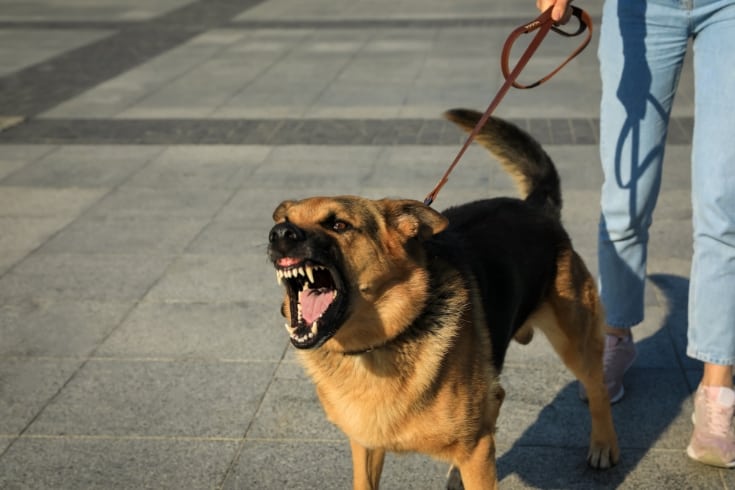
Leash-reactive dogs can pose a particular challenge with off-leash training. It’s important to understand the root of the leash reactivity, as this can help you address the problem and create a better environment for off-leash training.
Training methods such as desensitization and counter-conditioning usually work best in these cases, as they focus on teaching the dog positive behaviors and rewarding them when they stay calm.
- Start with basic leash training with the leash without distractions at first.
- Make sure your dog is comfortable and familiar with their surroundings.
- Gradually expand the area of your off-leash training sessions.
- Use positive reinforcement when your dog exhibits desired behaviors.
- Be patient and consistent with your training methods.
- Seek the help of a professional if you’re struggling.
- Be aware of leash-reactive dogs and use desensitization and counter-conditioning as necessary.
- Choose areas with minimal distractions, such as a fenced-in backyard or an enclosed park.
- Recognize when it’s time to leash up and go home.
If you find yourself in a situation with a leash-aggressive dog, the best course of action is to turn and leave as calmly as possible. Showing tension will only trigger your dog’s fight-or-flight response, which is likely to escalate the situation.
Keep a somewhat loose leash unless you need to control your dog, and then keep a tight leash while trying to be calm. Know your city’s off-leash laws and how you can be safe.
If an off-leash dog approaches you, make yourself large and loud to intimidate the other dog. This will usually be enough to discourage an attack. I will tell you that if the other dog does not back down, be prepared to defend yourself and your pet. Tools that will help you with this are endless.
In the end, avoiding a confrontation with an aggressive dog is always best.
Here are a few of the things you can use on your walks:
- Carry mace or other discouraging sprays for animals
- Be aware of your surroundings
- Don’t walk alone
- Walk in well-populated areas
- Keep your dog close by
- A large stick or walking staff/cane to shoo away off-leash dogs
Pet Safety Tips: Taking a Walk or Hiking
When walking or hiking with your dog, exploring the great outdoors, or just having some off-leash time, you’ll want to make sure you have some hard and fast rules, especially if you’re doing it off-leash.
When taking your dog on a walk or hike, it is essential to be aware of their behavior and take precautions depending on your situation. If your dog is leash reactive, it is best to start with basic leash training and gradually expand the area of your off-leash training sessions.
Use positive reinforcement training when your dog exhibits desired behaviors, and be patient and consistent with your training methods. If you’re struggling, seek the help of a professional.
A few tips that may help keep you and your dog safe:
- Start leash training and gradually expand the area of your off-leash training sessions.
- Use positive reinforcement when your dog exhibits desired behaviors.
- Be patient and consistent with your training methods, and try playing fun recall games.
- If you’re walking in an area with lots of distractions, such as a park with other dogs, leash up your dog and leave if they become too agitated.
- If you have a leash-aggressive dog, use desensitization and counter-conditioning, you never know when you’ll need your dog to listen truly, and recall can be a life-saving command.
FAQs
What Does Off-Leash Training Mean?
Off-leash training means teaching your dog how to respond to commands, stay close to you, and remain safe even when not attached to a leash. I often use this in hiking or exploring outdoors, as it allows my pup more freedom while still ensuring that they are under control.
How Long Should a Leash Be for Off-Leash Training?
The length of leash you use for off-leash training will depend on the size and temperament of your dog. A leash that is 10 feet or longer is typically recommended, as this will give you enough control while still allowing your pup some freedom to roam around.
Is It Too Late to Train My Dog Off-Leash?
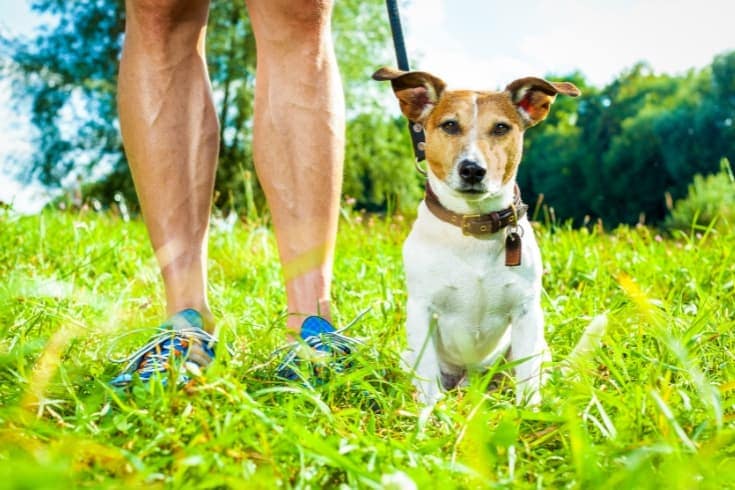
No! It’s never too late to train your dog off-leash. However, it is important to remember that the process will take time and patience. Start with shorter leash lengths and practice basic commands in a safe, controlled environment before gradually expanding the area of your off-leash training sessions.
What Dog Is Easiest to Train Off-Leash?
The easiest dog to train off-leash is typically one that has been leash trained and conditioned from a young age.
Breeds such as Golden Retrievers, Australian Shepherds, Border Collies, Poodles, Labrador Retrievers, and Vizslas are all known for their intelligence and obedience in leash training. These breeds are highly trainable, and when given the proper guidance, we can train them to stay close and obey commands even off-leash.
I pair that, though, with an understanding that with these easy-to-train attitudes, you have to learn what works best for your dog. Some dogs will readily take to being trained, while others may be “stubborn.” In this case, your dog is asking you “What’s in it for me?” and you need to convince them with positive reinforcement or a suitable reward.
What Age Are Dogs Good Off-Leash?
Although some puppies may start leash training at an early age, it’s usually best to wait until your pup is at least six months old before attempting any kind of off-leash training. This is because puppies are often still learning how to interact with other animals and people, which can pose a safety hazard if they’re given too much freedom too soon.
When Do You Know When a Dog Should Be Off-Leash?
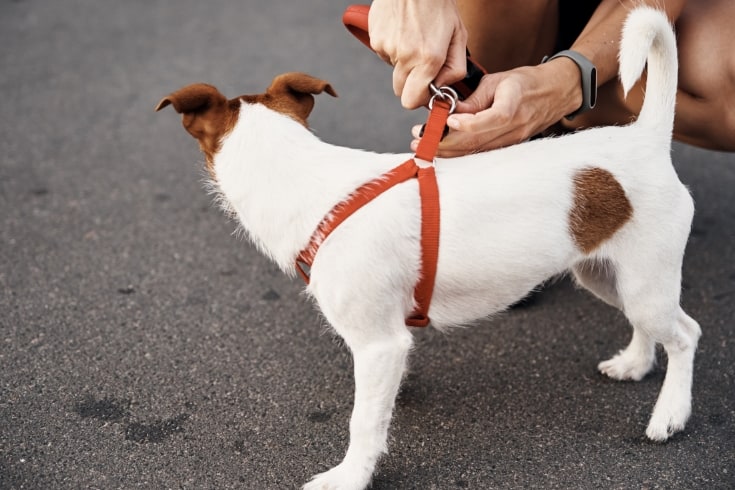
Once your pup has become comfortable with leash training, you’ll be able to tell if they are ready to venture off-leash. If they are able to consistently obey commands, stay close to you, pay attention to their surroundings, and not be overly reactive when in the presence of other animals or people, then they may be ready for an off-leash adventure!
What Dog Breed Runs Away the Most?
If you’re looking for a dog that will run no matter what, there are plenty of breeds to choose from. Huskies are well known for their escape artist tendencies, and I know Podencos for their ability to jump fences less than 6 feet tall in order to get to their prey. It really depends on the temperament of the dog you have and what type of dog it is.
Dogs that follow their nose are very difficult to get back if they catch a scent. Sighthounds, which rely on their sight to hunt, can be just as difficult if they see prey. Once they spot something, their drive kicks in, and they can run very fast.
Regardless of the breed, if you’re looking for a dog that will not run, there are plenty of options available. Do your research and make sure your energy will match that of the dog.
Conclusion
Dogs are a man’s best friend for a reason. They offer companionship, love, and security, but they also require a lot of care. When taking your dog on walks or hikes, it is essential to be aware of their behavior and take precautions depending on what situation you’re in.
If leash reactive, start with basic leash training and gradually expand the area of your off-leash training sessions using positive reinforcement when your dog exhibits desired behaviors. My experience is if you’re walking or hiking with your dog, make sure they have a very reliable recall.
Be patient and consistent with your training methods. In an area with lots of distractions, such as a city park with other dogs, leash up your dog if they become too agitated.
What do you think? Have you encountered an off-leash dog, or tried to train your dog off-leash? Tell us your tips and tricks below, we’d love to hear from you!
